Growing soybeans in the garden is becoming increasingly popular among home gardeners, and for good reason.
Soybeans are an excellent source of protein, fibre, and vitamins, making them a great addition to any kitchen garden. With just a few simple steps, you can have your own crop of fresh soybeans ready for harvest in no time!
In this guide, we’ll cover everything you need to know about growing soybeans in the garden, from selecting the right variety of seeds and preparing the soil, to harvesting and storing your crop. So let’s get started!
All About Soybeans
Before you begin, it’s important to understand the basics of soybean gardening. Soybeans are a type of legume that is native to East Asia and widely grown around the world.
They come in many varieties, from the common black-seeded variety to the more exotic yellow-seeded variety. Each variety has its own unique flavour and texture, as well as different growing requirements.
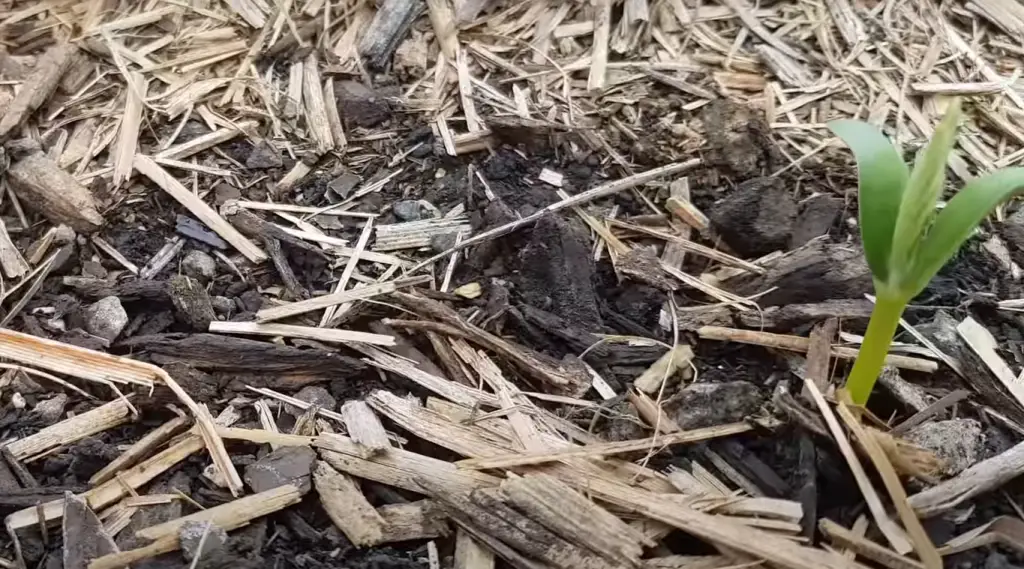
Soybeans require very little maintenance and can be grown in most climates. They thrive best in warm weather, but will also tolerate cool temperatures. To get the best yield, it’s important to choose a variety that is suited to your climate and soil type.
Planting Soybeans
Now that you know the basics of soybean gardening, it’s time to learn about planting them in your garden. The first step is to choose a location with plenty of sunlight and well-draining soil. Soybeans need at least 6 hours of direct sunlight each day, so pick a spot that gets ample sunshine throughout the day.
Next, you’ll need to prepare the soil. Soybeans prefer a slightly acidic pH level (5–7).
Once the soil is ready, you can start planting your soybean seeds! Plant them about 1 inch deep and cover lightly with soil. Water thoroughly and keep the soil moist until germination, which usually takes about 10 days.
Care
Sun and Temperature
As they grow, soybeans need plenty of sunshine and warmth.
If your temperatures are too cold, you can add a layer of mulch or straw around the plants to insulate them.Water and Humidity
Soybeans need consistent moisture, especially during the hottest months. Aim for 1-2 inches of water each week and monitor the soil to make sure it doesn’t dry out. In addition to regular watering, soybeans also thrive in high humidity levels.
If your climate is too dry, you can mist the plants once a day or set up an automatic irrigation system.
Fertiliser
Soybeans do not need a lot of fertiliser, but they will benefit from an occasional boost. Organic fertilisers such as compost or manure are best for soybean plants. Once the plants reach maturity (about 60 days after planting), you can add a layer of compost around them to help give them an extra boost.
Pruning and Weeding
Once your plants reach maturity, it’s important to keep up with regular pruning and weeding. Prune any dead or diseased leaves and remove weeds as soon as they appear. Also, make sure to keep an eye out for pests such as aphids, which are attracted to soybeans.
Propagation
If you’re looking to save money by propagating your own soybean plants, it’s actually quite easy. All you need to do is collect the beans from mature plants and allow them to dry on a screen or paper plate.
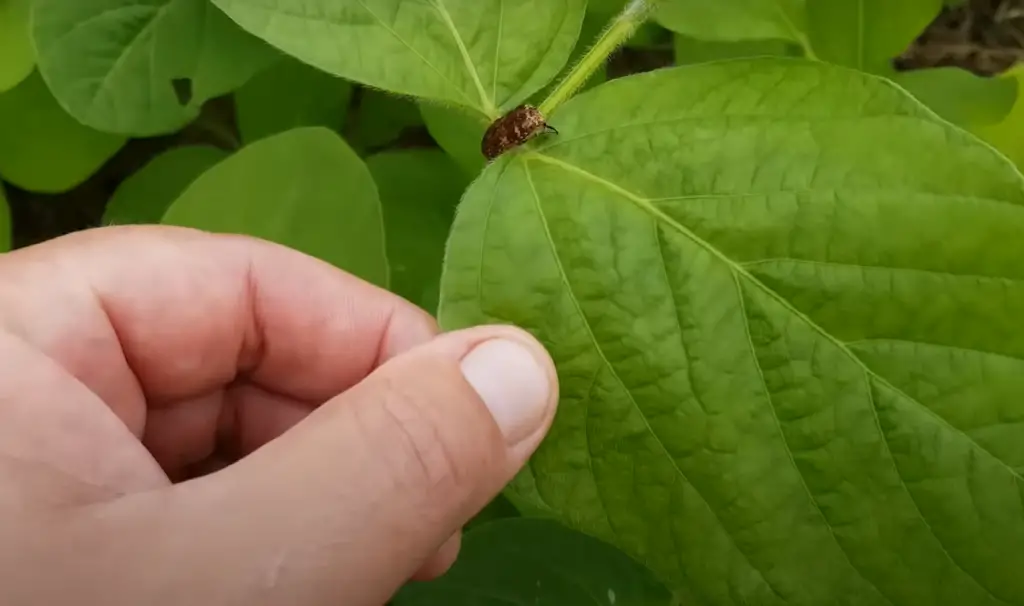
Once the seeds are completely dry, store them in an airtight container until planting time.
Harvesting and Storing
When it comes time to harvest your soybeans, you’ll want to wait until the pods are dry and brown before picking them. Once picked, they can be stored in an airtight container for up to 6 months.
Troubleshooting
Growing Problems
If your soybean plants don’t seem to be doing well, there could be a few different reasons. The most common cause of poor growth is improperly prepared soil or inadequate watering.
Pests and Diseases
Soybean plants are susceptible to a variety of pests and diseases. The most common are aphids, spider mites, and powdery mildew. To prevent these problems, keep your plants healthy by providing adequate water, sunlight, and nutrients.
You can also use natural pest control methods such as neem oil or insecticidal soap to manage any outbreaks.
FAQ
How long do soybeans take to grow?
Soybeans typically take about 90 days from planting to harvest. The exact amount of time can vary depending on the variety and the climate.
Do soybeans need to be fertilised?
Yes, soybeans will benefit from occasional fertilising with organic compost or manure. Once the plants reach maturity (about 60 days after planting), you can add a layer of compost around them to help give them an extra boost.
Can I grow soybeans in containers?
Yes, it’s possible to grow soybeans in containers as long as they are large enough and have adequate drainage. Make sure the container receives at least 6 hours of direct sunlight each day and water regularly.
What is the best way to grow soybeans?
The best way to grow soybeans is to choose a variety that is suited to your climate and soil type. Then, make sure the soil has the proper pH level (5-7) and provide adequate sunlight, water, and nutrients.
Where do soybeans grow best?
Soybeans grow best in warm climates with at least 6 hours of direct sunlight each day. They also prefer slightly acidic soil (pH 5-7) and consistent moisture.
Are soybeans easy to grow?
Yes, soybeans are relatively easy to grow and require very little maintenance.
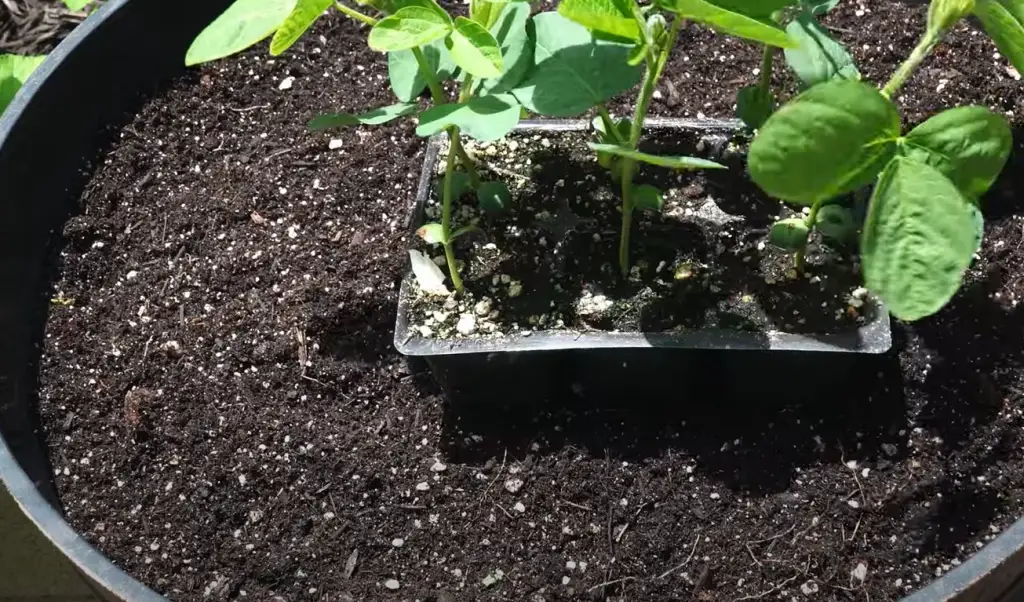
As long as you choose the right variety for your climate and provide adequate sunlight, water, and nutrients, you should have no problem growing healthy plants.
Are soybeans a plant or seed?
Soybeans are actually a seed, which is why they need to be planted in the ground in order to grow. Once mature, soybeans can be harvested and stored for later use.
What month is best to grow soybeans?
The best time to plant soybeans is in the spring, when temperatures are warm and there’s plenty of sunshine. Depending on your climate, you may also be able to grow a second crop in late summer or early fall.
Can I eat fresh soybeans?
Yes, you can eat fresh (green) soybeans straight from the garden. They have a slightly sweet taste and are often cooked like other green beans or used for edamame.
Are soybeans healthy?
Yes, soybeans are very nutritious and can be a great addition to your diet. They are low in calories but high in fibre, protein, vitamins, and minerals. Additionally, they contain isoflavones which can help reduce inflammation and protect against certain diseases.
How much water do soybeans need?
Soybeans need about 1 to 2 inches of water per week, especially during the hottest months. Monitor the soil and adjust your watering schedule accordingly to ensure that the plants are not over- or under-watered.
Do I need to remove soybean pods before harvesting?
No, you don’t need to remove the pods before harvesting. Simply wait until the pods are dry and brown before picking them off the plants. This will ensure that they’ll store properly and last longer.
Are there any diseases I need to be aware of when growing soybeans?
Yes, some common diseases that can affect soybean plants include aphids, spider mites, and powdery mildew. To prevent these problems, keep your plants healthy by providing adequate water, sunlight, and nutrients. You can also use natural pest control methods such as neem oil or insecticidal soap to manage any outbreaks.
What pests are attracted to soybeans?
Soybeans can be prone to aphids, spider mites, and other insects. To prevent an infestation, keep your plants healthy by providing adequate water, sunlight, and nutrients.

You can also use natural pest control methods such as neem oil or insecticidal soap to manage any outbreaks.
Do I need to rotate soybeans in the garden?
Yes, it’s a good idea to rotate your soybeans in the garden each year. This will help reduce soil-borne diseases and pests, as well as replenish nutrients in the soil. Try planting different crops with similar growing requirements in the same location each year.
Can I save my own soybean seeds?
Yes, it’s possible to save your own soybean seeds. All you need to do is collect the beans from mature plants and allow them to dry on a screen or paper plate. Once the seeds are completely dry, store them in an airtight container until planting time.
Are there any companion plants that I should plant with my soybeans?
Yes, some good companion plants for soybeans include corn, squash, radish, and onion. These vegetables all have similar growing requirements and can help deter pests and replenish the soil when rotated in the garden each year.
Additionally, planting herbs such as marigolds or basil near your soybean plants can also help repel certain insects.
Are there any organic methods I can use to enhance my soybean crop?
Yes, there are several organic methods you can use to enhance your soybean crop. These include incorporating compost or manure into the soil before planting, using natural pest control measures such as neem oil or insecticidal soap, and practising crop rotation with other vegetables and herbs.
Additionally, planting cover crops such as clover can help improve soil structure and add nutrients to the soil.
What is the best way to store soybeans?
The best way to store soybeans is by allowing them to dry completely before placing them in an airtight container. Make sure the beans are stored in a cool, dry place away from moisture and sunlight. Soybeans can last up to a year when stored properly.
How do I cook fresh soybeans?
Fresh (green) soybeans can be cooked like other green beans. Simply blanch the beans in boiling water for 3-5 minutes and then add them to your desired recipe. They can also be eaten raw as edamame or tossed with spices and olive oil for a delicious snack.
Are there any recipes specifically for cooked soybeans?
Yes, there are several delicious recipes that use cooked soybeans. Some popular dishes include stir-fried edamame, soybean curry, and vegan baked beans. There are also plenty of creative ways to use cooked soybeans in soups, salads, and casseroles.
How can I use dried soybeans?
Dried soybeans are an excellent source of plant-based protein and can be used in a variety of recipes. Some popular dishes include miso soup, vegan chilli, and tempeh burgers. You can also blend them into your favourite smoothie or add them to salads and stews for a nutritious boost.
How should I prepare the soil before planting soybeans?
It’s important to prepare the soil before planting soybeans in order to ensure healthy plants and successful harvests. First, make sure the soil is loose and well-draining.
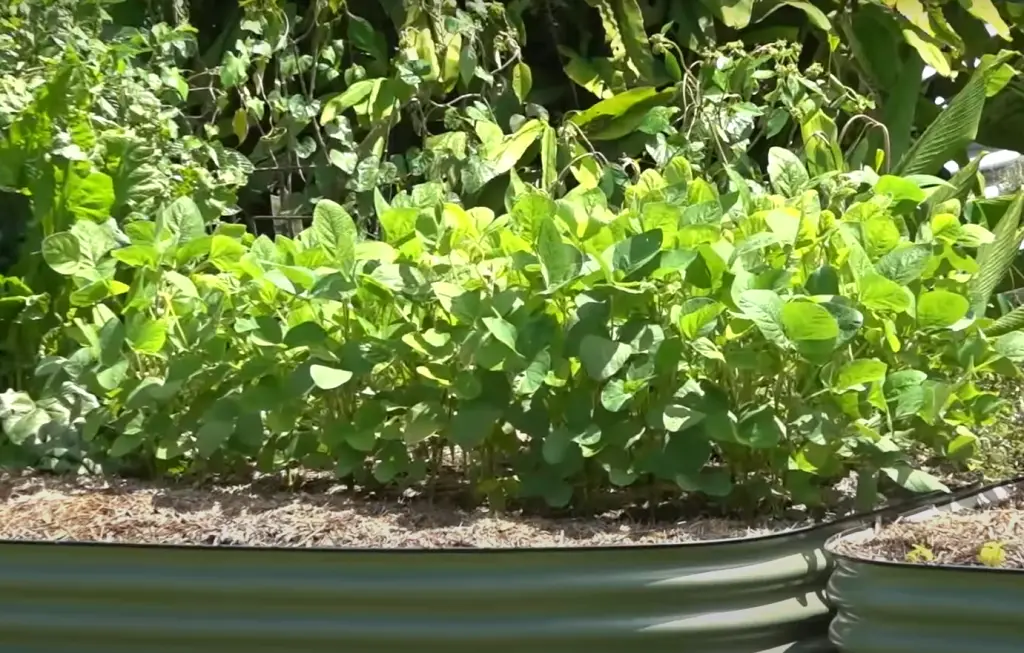
Adding lots of organic matter such as compost or manure can help improve drainage and add nutrients to the soil.
Additionally, if your soil is acidic, you may need to add limestone or other amendments to raise the pH level.
Which type of soybeans should I plant?
There are a few different types of soybeans available, including determinate and indeterminate varieties. Determinate varieties produce all their beans in one batch before dying off, while indeterminate varieties continue to produce over time for a longer harvest season. Decide which type works best for your climate and gardening goals.
Which varieties of soybeans are best for home gardens?
Two popular varieties of soybeans for home gardeners are ‘Envy’ and ‘Midnight’. Both varieties have good disease resistance and produce an abundance of small, tender beans. Additionally, they both grow well in a variety of climates and soil types.
Does the soil need to be warm for soybean plants to grow?
Yes, the soil should be at least 65°F (18°C) before you plant your soybeans. If your soil is too cold, it can slow down germination and stunt growth. You can use a soil thermometer or wait until all danger of frost has passed in your area before planting your soybeans.
Do I need to water my soybean plants?
Yes, it’s important to provide adequate water for healthy growth and development. Soybeans prefer moist soil, so make sure you give them about 1-2 inches of water each week while they are growing. As the pods begin to mature, reduce watering to prevent the beans from getting too soft.
Are soybeans a good source of nutrition?
Yes, soybeans are an excellent source of plant-based protein and are also rich in essential vitamins and minerals.
They contain about 30% protein, as well as iron, calcium, magnesium, phosphorus, potassium, zinc, Vitamin B6, and Vitamin C. Additionally, soybeans are a great source of dietary fibre and omega-3 fatty acids.
Can I use old soybean seed or should I buy new seed every year?
It’s best to buy new seed each year because old seed may not germinate as well. If you do choose to use last year’s seed, make sure to inspect them carefully and discard any that appear to be diseased or damaged.
Additionally, store your seed in an airtight container away from moisture and sunlight to preserve freshness.
Are there any pests or diseases I should watch out for?
Yes, there are a few pests and diseases that can affect soybeans. Common pests include aphids, whiteflies, and the soybean cyst nematode. Diseases such as anthracnose and bacterial blight can also cause problems. To prevent these issues, use natural pest control measures such as neem oil or insecticidal soap and practice crop rotation with other vegetables in your garden.
Do I need to fertilise my soybean plants?
Yes, it’s important to fertilise your soybean plants throughout the growing season. A balanced fertiliser or one high in nitrogen can help promote healthy growth and development.
Additionally, adding compost or manure to the soil before planting will provide essential nutrients for your plants as well.
What is the best time of year to grow soybeans?
The best time of year to grow soybeans depends on your climate and location. Generally, soybeans should be planted in the late spring or early summer when the soil is warm enough for germination. In cooler climates, you may need to wait until mid-summer or even early fall for optimal growth and development.
Does it matter how long I let my soybeans mature?
Yes, letting your soybeans fully mature will increase the nutritional value and flavour of the beans.
Additionally, waiting until the pods are dry will ensure that they keep longer after harvesting. You can tell when the beans are ready to be harvested when the pods turn yellow and start to crack open.
Do I need to remove the beans from the pod before storing them?
No, you can store both fresh and dried soybeans in their pods. For fresh beans, keep them refrigerated in a sealed container for up to two weeks.
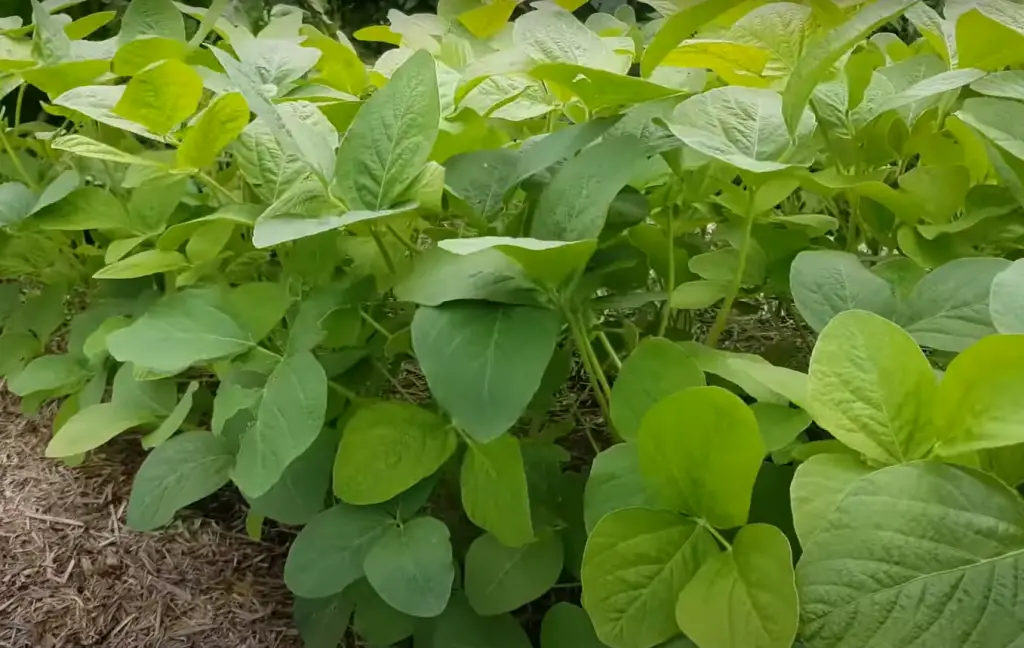
Dried beans can be stored at room temperature in an airtight container for up to one year. Both types of beans should be protected from moisture and heat to ensure longevity.
Can I save soybean seeds from year to year?
Yes, you can save soybean seed for up to three years if stored correctly. Store the seeds in a cool, dry place away from direct sunlight and make sure they are kept in sealed containers or vacuum-sealed bags.
Additionally, any beans that have been damaged or diseased should be discarded before storing.
Useful Video: Growing Edamame from Seed to Plate | Backyard Soybeans
Conclusion
Growing soybeans in the garden can be a rewarding experience, as it provides you with fresh, nutritious beans for your favourite meals. With proper soil preparation and adequate care, you can easily grow a successful crop of soybeans in your backyard.
Keep in mind that plants need warm soil to germinate and plenty of water throughout the growing season. Additionally, use natural pest control methods and fertilise as needed to maximise yields. With the right knowledge and care, you can have a successful harvest of soybeans for years to come!
By following these tips on how to grow soybeans in the garden, you’ll be well-prepared to start your own crop. From selecting the right variety of bean to caring for the plants throughout their life cycle, you’ll have everything you need for a successful harvest. With some time and effort, your garden can be filled with delicious soybeans!
References:
- https://www.epicgardening.com/how-to-grow-soybeans/










Leave a Reply
View Comments